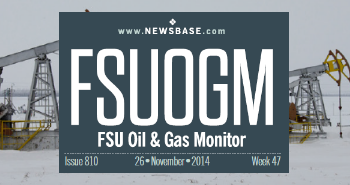FSUOGM: Gazprom reveals Nord Stream 2 delivery plans
_0.jpg)
Russia’s Gazprom has said it expects to export as much as 5.6bn cubic metres of natural gas via Nord Stream 2 this year, the Moscow-based Kommersant newspaper reported on August 19, noting that the pipeline should start up in mid-October.
Using Russian pipelaying vessels, Gazprom completed the first of Nord Stream 2’s two strings in June, and is due to finish the second this month. While the pipeline’s full capacity is 55 bcm per year, Gazprom can only send half of this amount of gas under EU Third Energy Package legislation, which was applied to the pipeline last year; that is unless the company can get the pipeline’s operator, its wholly owned subsidiary Nord Stream 2 AG, certified as an independent operator by German regulators.
Gazprom started this process in July with the filing of an application, although it is uncertain whether its bid will be successful. Poland and other opponents of Nord Stream 2 are lobbying for Germany to deny the request, although expectations are that Berlin will ensure that approval is given, considering its strong support for the pipeline.
European gas prices have spiked in recent months, amid curtailed supply and a post-pandemic recovery in demand, as well as increased storage needs ahead of the winter storage season. On August 16, the September supply contract at the Dutch TTF hub reached over $586, but on news of Nord Stream 2’s imminent launch on August 19, it had subsided to $507. But later in the day it returned to $527.
Meanwhile, Russia’s largest independent oil producer Lukoil has broken ground on a catalytic cracking unit at its refinery in Perm, the company announced on August 20.
The project is backed by an investment agreement between Lukoil and Russia’s energy ministry, which gives refiners a subsidy on refining feedstock in return for commitments to upgrade their facilities. The cracking unit is due online in 2026 and will process up to 1.8mn tonnes per year (tpy) of feedstock at full capacity.
If you’d like to read more about the key events shaping the former Soviet Union’s oil and gas sector then please click here for NewsBase’s FSU Monitor.


Follow us online